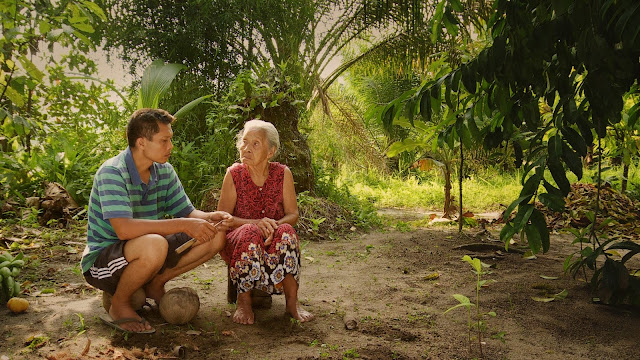Film maker Syamsul Yusof speaks to the Sun about his latest horror movie Munafik. Here is the full
story.
Headline: In His Father’s Footseps
By Bissme S
Syamsul Yusof has been directing since he was 19. The son of
Malaysian renowned director Datuk Yusof Haslam made his directing debut for a
TV series under his father’s production company, Skop Productions Sdn Bhd.
Three years later, he directed his first feature film,
Evolusi KL Drift, which collected RM3 million at the box office. Since then,
the 31-year-old has helmed nine films, two of which earned him the best
director award at the Malaysian Film Festival, the first in 2010 for Evolusi Kl
Drift 2, and the second in 2011 for KL Gangster. His latest effort is the
horror, Munafik (above), which has a lot of of Islamic elements. It opens in
cinemas on Feb 25.
“The holy Al Quran was one of my main references when I
wrote the script,” says Syamsul.
“I spoke to many ustaz (religious scholars) before making
this film. I did not want to cross any religious boundaries that may offend
anyone.”
Munafik centres on Adam, an Islamic medical practitioner,
who is having a difficult time coming to terms with his wife’s death. A woman
named Maria believes she is being possessed by something sinister and begs him
to help her. But Adam doesn’t realise that the spirit haunting Maria will also
attack him. Syamsul also takes on the
role of Adam, while actress Nabila Huda plays Maria. Others in the cast include
Fizz Fairuz, Pekin Ibrahim, Datuk Rahim Razali and A. Galak.
“I gave Nabila a tough time on set, but she rose to the
occasion,” he says.
“Her performance will dazzle you.”
Munafik is Syamsul’s second horror movie after the 2012
Khurafat, which became a box-office hit, with takings of more than RM8 million.
The trailer of Munafik looks frightening enough to ensure another success for
Syamsul.
“I believe that the recipe for a good horror movie is to pay
attention to the script,” he says.
“Most young filmmakers neglect the script, and put more
attention in creating scary and suspenseful moments.”
Syamsul cited horror movies such as Thailand’s Nang Nak and
Shutter, which have solid scripts. As for hitting box-office success, Syamsul
spoke of his bitter experience with his previous film, KL Gangster 2. Before
the film opened in cinemas, pirated copies of the movie were already selling in
the streets.
“KL Gangster made just over RM11 million, while KL Gangster
2 only made RM5 million,” he says. “I am sure KL Gangster 2 would have made
more money if not for the piracy. I worked very hard on my film. [And] someone
just came along and copied my film, and made a lot of money from it. I did not
get anything from the pirated copies. I felt frustrated. I almost wanted to
quit making films. But I could not bring myself to do it, as making films is in
my blood.”
At 15, Syamsul already knew he wanted to be a filmmaker just
like his famous father.
“Most people assume my road to becoming a filmmaker was easy
because [of my father],” he says. “Well, they are wrong. When I started my
career, I had actors who disrespected me on the set. I had critics who doubted
me. But if you want to be successful in your field, you have to develop a thick
skin, and learn to ignore your critics.
“If you are in the film business, you will always have to
face the critics. Even great films like Avatar have critics. You cannot impress
everyone.”
What does his famous father think of him as a filmmaker?
With a laugh, he says: “My father has never praised me. He is my fiercest
critic. Strangely enough, behind my back, my father will say great things about
me and my films to his friends.
“When I met [those
people], they would tell me how my father is very proud of me, but I had a hard
time believing them.
“Now I am older and I understand my father’s motivation
better. He criticises me because he wants me to improve my skills as a
director. He does not want me to be complacent with my success.”
Scenes from Munafik













